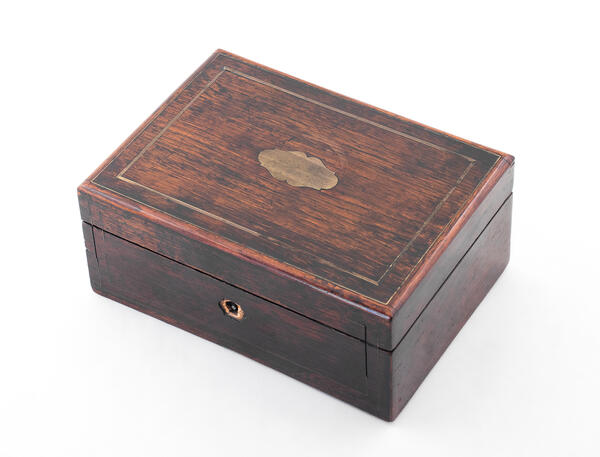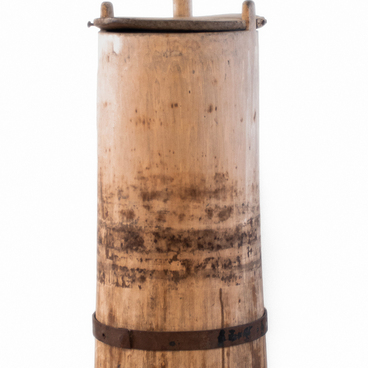The box in the shape of a chest is an original exhibit. The lid is held by two metal hinges, along its perimeter there are two narrow strips, one of which is made of yellow metal. In the center of the lid there is an inlay in the form of a small vignette made of bone. The box is locked with a key.
In the “Explanatory Dictionary of the Living Great Russian Language” by the writer and ethnographer Vladimir Ivanovich Dal, a jewelry box is defined as “a casket, a small trunk, a packing case, an improvised box of various types, for money, with a writing set”. A similar definition is given in the explanatory dictionary of the linguist Sergei Ivanovich Ozhegov: “a small lockable box for little things”.
The casket as a separate interior attribute appeared in Russia at the beginning of the 17th century. Before that, valuable things were mostly stored in big caskets called “larets”, or small ones called “larchik”. Whatever they were called, everybody had such household items at their home. Mostly memorabilia, letters and jewelry were kept in them.
In the 17th–18th centuries, a separate type of
boxes became popular — snuffboxes. They were intended for the storage of snuff.
In addition to the main function, they were also collectibles. In Russia,
snuffboxes became popular during the reign of Peter the Great.




